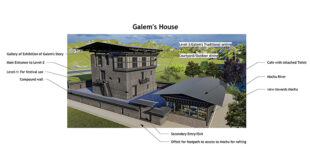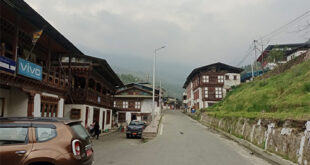Bhutan’s nutrition indicators have improved among the South Asian countries according to the World Bank (2013). Bhutan multiple indicator survey 2010 showed that under nutrition is higher in poorer households. This is a cause of concern as bottom 40 percent of children under five years are stunted and 15 percent fall in the category of being under nourished. The under nutrition problem is prevalent in the eastern part of the country and among children of mothers with no education.
According to the Bhutan Poverty Assessment Report 2014, the dietary diversity score can be used to evaluate the direction of change and equality in outcomes. The dietary diversity a useful indicator of nutritional
access by itself as it is the number of different food groups consumed by the household during the week prior to being surveyed for the Bhutan Living Standard Survey (BLSS).
The report also states that there has been an improvement in dietary diversity score between year 2007 and 2012. The comparison of the dietary patterns among Bhutanese households shows that nearly all household consumed food in the cereals, milk and milk products and vegetable groups.
The main sources of energy for most households are cereals, vegetables and milk and milk products. There has been significant increase in protein intake over the years. For protein, households tend to rely primarily on meat and fish. The proportion of households consuming meat has increased from 46 percent to 93 percent between 2007 and 2012.
The reports also states that households’ consumption of pulses, legumes and nut products rise from 11 percent to 86 percent between 2007 and 2012.
Dietary components that distinguish the diets of the poor from the non poor were pulses, legumes and nuts, meat products, fish, sugar products, fruit and milk and milk products.
There has been a significant improvement in household dietary diversity in Bhutan. It states that there were no differences between the poor and non poor in 2012 for the three food groups, cereals, vegetables, oil and fats, while there had been some distinction between them in 2007. In addition, the differences in household dietary diversity score (HDDS) among deciles of per-capita consumption diminish between 2007 and 2012. HDDS increased to 9.6 in 2012 from 6.6 in 2007. This compares favorably to that of Nepal (8.8) and Pakistan (9.1).
The report says that the rural-urban differences between HDDS also diminished near to equivalence between 2007 and 2012 possibly because of the improvement in the market access.
The report also highlights that the incidence of sickness and injury remain stable in Bhutan. One in six individuals reported either sickness or injury in 2007 and 2012. The out of pocket expenditure on health at household level increased five-fold in nominal terms between 2007 and 2012. However, for the poor the increase was slightly smaller out of pocket expenditure as a share of consumption expenditure was five percent for poor households compared to 15% for non poor households indicative of the equality in access to health services in Bhutan.
 The Bhutanese Leading the way.
The Bhutanese Leading the way.



